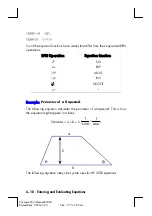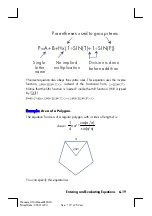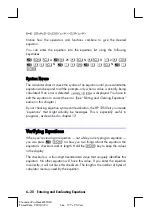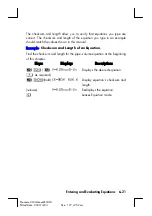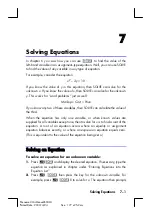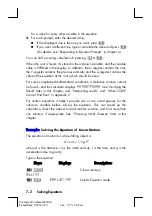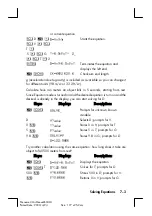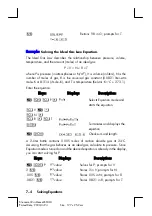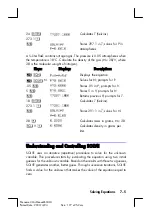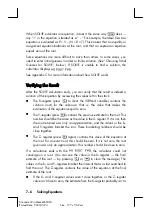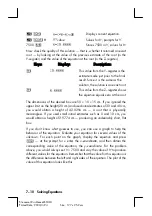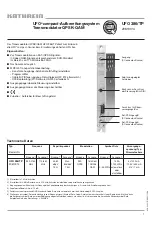
7–10 Solving
Equations
File name 32sii-Manual-E-0424
Printed Date : 2003/4/24 Size : 17.7 x 25.2 cm
{
G
#/1.2º
Displays current equation.
{
H
#@
value
Solves for
H
; prompts for
V
.
7500
f
/)
Stores 7500 in
V
; solves for
H
.
Now check the quality of this solution — that is, whether it returned an exact
root — by looking at the value of the previous estimate of the root (in the
Y–register) and the value of the equation at the root (in the Z–register).
Keys: Display:
Description:
9
)
This value from the Y–register is the
estimate made just prior to the final
result. Since it is the same as the
solution, the solution is an exact root.
9
)
This value from the Z–register shows
the equation equals zero at the root.
The dimensions of the desired box are 50
×
10
×
15 cm. If you ignored the
upper limit on the height (20 cm) and used initial estimates of 30 and 40 cm,
you would obtain a height of 42.0256 cm — a root that is physically
meaningless. If you used small initial estimates such as 0 and 10 cm, you
would obtain a height of 2.9774 cm — producing an undesirably short, flat
box.
If you don't know what guesses to use, you can use a graph to help the
behavior of the equation. Evaluate your equation for several values of the
unknown. For each point on the graph, display the equation and press
W
— at the prompt for
x
enter the
x–coordinate,
and then obtain the
corresponding value of the equation, the
y–coordinate.
For the problem
above, you would always set
V
= 7500 and vary the value of
H
to produce
different values for the equation. Remember that the value for this equation is
the
difference
between the left and right sides of the equation. The plot of the
value of this equation looks like this.

